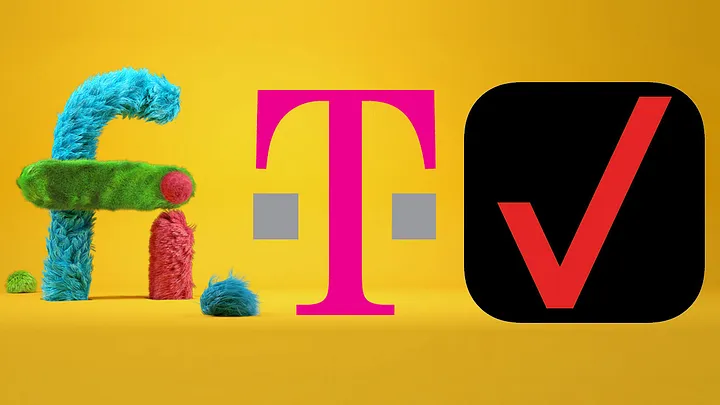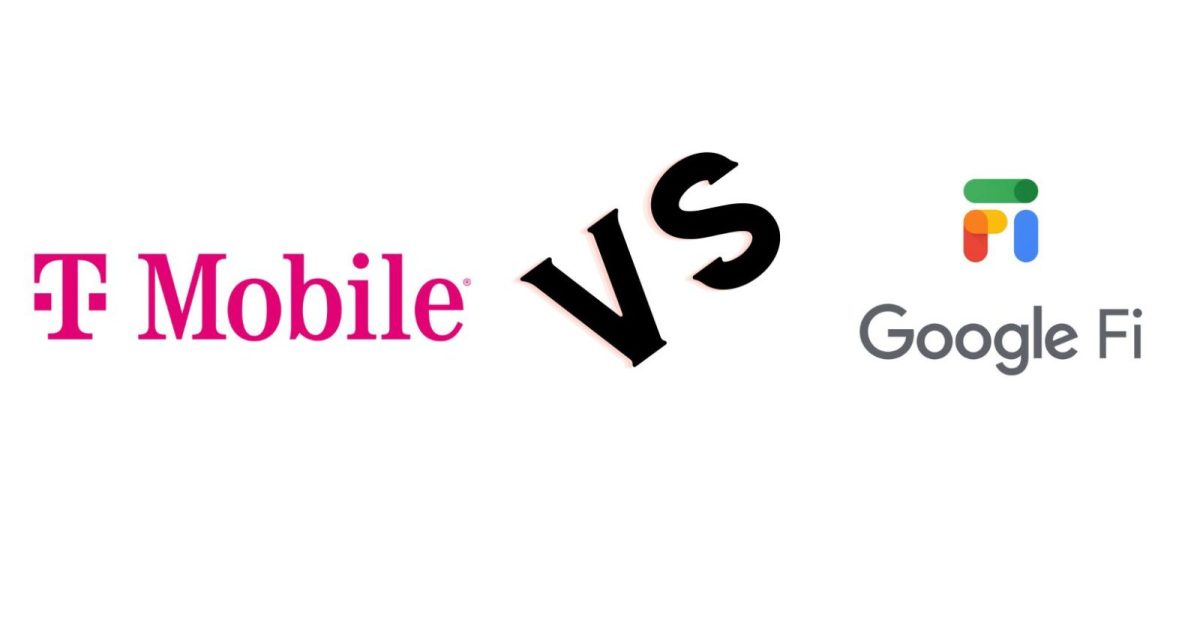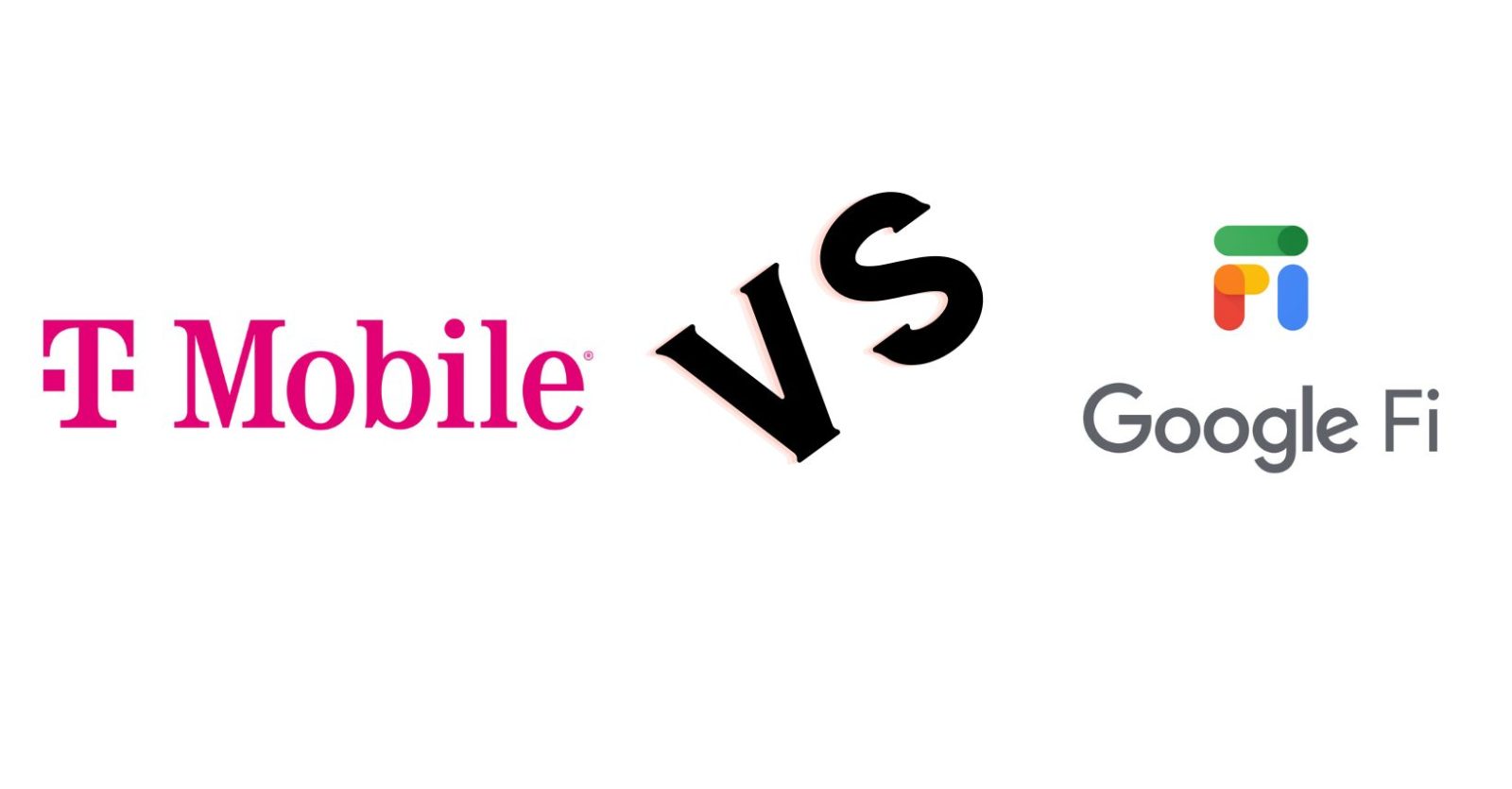Google Fi vs T Mobile: Making the Right Choice for Your Mobile Needs
Google Fi vs T Mobile: Making the Right Choice for Your Mobile Needs
Introduction: Choosing a mobile carrier is an important decision, and if you’re torn between Google Fi vs T Mobile we’re here to help.
In this comprehensive comparison, we’ll dive deep into various aspects, including pricing, coverage, perks, and phone selections, to assist you in making an informed choice between these two providers.
Google Fi vs T Mobile — Pricing:
Regarding pricing, both Google Fi and T-Mobile offer competitive options. Here’s a breakdown of their pricing plans:
Google Fi:
- Entry-level unlimited: Simply Unlimited
- $60 for one line
- $45 per line for two lines
- $30 per line for three lines
- $30 per line for four lines
- Mid-level unlimited: Unlimited Plus
- $70 for one line
- $60 for two lines
- $50 for three lines
- $45 for four lines
- High-end unlimited: Go5G Plus
- $90 for one line
- $75 for two lines
- $50 for three lines
- $46 for four lines
- Other plans: Flexible Plan
- $20 for one line
- $18 per line for two lines
- $17 per line for three lines
- $17 per line for four lines (plus $10 per GB of data used)

T-Mobile:
- Entry-level unlimited: Essentials
- $50 for one line
- $40 for two lines
- $30 for three lines
- $25 for four lines
- Mid-level unlimited: Magenta
- $70 for one line
- $60 for two lines
- $47 for three lines
- $40 for four lines
- High-end unlimited: Magenta Max
- $85 for one line
- $70 for two lines
- $47 for three lines
- $43 for four lines
- Other plans: None
Comparing the two, Google Fi and T-Mobile offer similar pricing for entry-level unlimited plans. However, as you add more lines, T-Mobile becomes more affordable. For instance, T-Mobile is at least $5 cheaper per line if you have three lines.
Suppose you’re willing to spend a bit more on extra features. In that case, T-Mobile’s Unlimited Plus plan aligns well with Google Fi’s Magenta and Go5G options. T-Mobile also offers enticing perks like Netflix and Google One.
Additionally, Google Fi’s Flexible Plan is unique, allowing you to pay based on your data usage, with data becoming free after a certain point to prevent bill escalation. If these prices don’t meet your needs, consider exploring Mobile Virtual Network Operators (MVNOs) for more cost-effective options.
Google Fi vs T Mobile — Coverage:
Both Google Fi vs T Mobile primarily rely on T-Mobile’s network for 4G LTE and 5G coverage, providing solid coverage across the United States. However, Google Fi offers an advantage by adding US Cellular coverage during roaming, particularly in rural areas. This feature can significantly benefit travelers seeking reliable connectivity in less densely populated regions.
T-Mobile offers a comprehensive map illustrating its 5G coverage, including 600Mhz coverage and 5G Ultra-Capacity, known for its fast and reliable connections. While relying on similar towers, Google Fi’s coverage map may have variations specific to your local area.
Google Fi vs T Mobile — Perks and Promotions:
Perks and promotions can set carriers apart. Here’s a comparison of the perks offered by Google Fi and T-Mobile:
T-Mobile:
- T-Mobile Essentials: None
- T-Mobile Go5G: Netflix Basic (one SD screen)
- T-Mobile Magenta: 1 screen of Netflix Basic (with two or more lines)
- T-Mobile Go5G Plus: Netflix Basic (one SD screen)
- T-Mobile Magenta Max: 1 screen of Netflix Basic (with 1 line) or two screens of Netflix Standard (with two or more lines)
Google Fi:
- Google Fi Flexible: None
- Google Fi Simply Unlimited: None
- Google Fi Unlimited Plus: Google One membership
T-Mobile excels in providing perks, including Netflix access and Apple TV Plus, depending on your plan. In contrast, Google Fi focuses on Google One memberships, offering discounts on Google products and extra cloud storage.
Regarding discounts, T-Mobile often offers BOGO deals and substantial discounts on various smartphone models. Google Fi’s discounts are also notable, especially if you’re interested in flagship devices.

Google Fi vs T Mobile — Phone Selections:
Google Fi: Google Fi won’t sell iPhones directly but supports them. You can bring your iPhone to the network or choose from several Android devices, including Google Pixel, Samsung Galaxy, and Motorola’s Moto G series.
T-Mobile: T-Mobile offers many smartphones, including iPhones, Samsung Galaxy, OnePlus, and more. You can purchase the latest devices directly from T-Mobile or bring compatible devices that support their network.
The choice in the Google Fi vs. T-Mobile comparison ultimately depends on your specific needs. Both carriers offer reliable networks, competitive pricing, and a variety of perks. Google Fi stands out with US Cellular coverage during roaming and is an excellent match for Google Pixel users. T-Mobile, on the other hand, provides a broad range of smartphones and enticing streaming perks. Evaluate your priorities and preferences to determine which carrier aligns best with your requirements.
Which Carrier is Right for You?
Now, for the moment of truth: Which carrier should you choose between Google Fi vs T Mobile? In the showdown between the two, the decision could be more straightforward, as it depends on your unique needs and preferences.
Both carriers share the advantage of utilizing a reliable network, offering competitive pricing plans, and providing various smartphone options. However, here’s a summary to help you make a more informed choice:
- Google Fi stands out with its added US Cellular coverage during roaming, making it an excellent fit for those who frequently travel, especially in rural areas. It’s a perfect match for users of Google Pixel devices. Additionally, Google Fi’s Flexible Plan provides flexibility in managing data usage.
- T-Mobile boasts many smartphones, including iPhones, Samsung Galaxy devices, OnePlus, and more. Depending on your plan, it shines in the perks department, offering enticing streaming benefits like Netflix and Apple TV Plus. T-Mobile also often provides discounts and promotional deals on the latest smartphones, making it a strong choice for those looking for device upgrades.
If extensive coverage and Google Pixel compatibility are vital factors, Google Fi may be your ideal choice. On the other hand, if you value a diverse selection of smartphones and value-added perks, T-Mobile could be the carrier for you. Take the time to evaluate your needs, compare pricing plans, and consider the perks that matter most to you to make an informed decision.
Important Thoughts
Choosing between Google Fi vs T Mobile is a significant decision that depends on your specific requirements.
We’ve presented a detailed comparison of pricing, coverage, perks, and phone selections to assist you in making the right choice. Ultimately, both carriers offer excellent services, so your final decision should align with what suits your preferences and priorities best.
Remember that personal preferences, such as the devices you prefer and the perks that matter most to you, play a crucial role in your decision-making process. Take the time to assess your needs and make an informed choice that will effectively meet your mobile communication needs.
Google Fi or T-Mobile, you’re bound to enjoy a reliable network and a host of services tailored to your mobile lifestyle.
Data Usage and Customization
Another aspect to consider when deciding between Google Fi and T-Mobile is how you use your data and the level of customization you desire.
- Google Fi excels in data usage flexibility. With its Flexible Plan, you pay for the data you use. Your bill can stay relatively low if you’re not a heavy data user. Furthermore, Google Fi caps the data charges, ensuring you won’t experience bill shock.
- T-Mobile, on the other hand, typically offers unlimited data plans. If you consume a lot of data, this might be more suitable for your needs. However, evaluating whether you genuinely need unlimited data or could benefit from the savings offered by Google Fi’s pay-as-you-go approach is essential.
Customer Support and Satisfaction
Customer support and overall satisfaction are vital factors when choosing a mobile carrier. Here’s how Google Fi and T-Mobile compare in this regard:
- Google Fi is known for its excellent customer service and responsiveness. Users often report positive experiences with their support team. Additionally, Google Fi offers an online Help Center with detailed resources and troubleshooting guides.
- T-Mobile has made significant strides in improving customer service in recent years. They offer various channels for customer support, including phone, chat, and social media. T-Mobile also has a dedicated app for account management and support.
International Travel
If you’re a frequent traveler or need international coverage, this could be a deciding factor:
- Google Fi shines in international travel. It offers straightforward international data usage at the same rates as in the United States in over 200 countries and territories. This can be a significant advantage for globetrotters or business travelers.
- T-Mobile provides international coverage through its Magenta and Magenta Max plans, offering unlimited texting and data in many countries. However, the specific countries covered and the data speeds can vary, so checking if your destination is included is essential.
Family and Multi-Line Plans
If you’re considering a family or multi-line plan, compare the options available:
- Google Fi offers straightforward pricing for multiple lines. As the number of lines increases, the cost per line decreases, making it competitive for families and groups.
- T-Mobile provides a range of family plans, including discounts for additional lines. They often run promotions with additional lines at no extra cost, making it attractive for families.
Network Reliability
Lastly, consider the network reliability in your area. While both Google Fi and T-Mobile rely on T-Mobile’s network, individual experiences can vary depending on your location.
- Google Fi adds US Cellular coverage during roaming, which can improve coverage in certain predominantly rural regions.
- T-Mobile continues to expand and improve its network infrastructure, including its 5G capabilities. However, checking coverage maps and asking locals about their experiences in your location is essential.
Making the Decision
Choosing between Google Fi vs T Mobile ultimately depends on your unique needs and preferences. Consider factors like pricing, coverage, perks, device compatibility, data usage, customer support, international travel, family plans, and network reliability.
To make the right decision, take the time to assess your priorities and review the plans and features offered by both carriers thoroughly. You can also seek advice from friends or family members who use these services in your area to get real-world insights.
No matter which carrier you choose, Google Fi vs T Mobile offer competitive services with distinct advantages. Your ideal choice will align with your specific lifestyle and communication requirements.
Device Compatibility and Upgrades
The device you currently own or plan to use can significantly influence your choice of carrier. Consider the following:
- Google Fi primarily supports Android devices, including Google Pixel, Samsung Galaxy, and Motorola phones. While it won’t sell you an iPhone directly, you can bring your unlocked iPhone to Google Fi. Still, some features may not be fully compatible.
- T-Mobile offers a broader range of device choices. It supports Android and Apple devices, making it a more versatile option if you have a specific smartphone preference. If you’re an iPhone enthusiast, T-Mobile allows you to access the latest iPhone models seamlessly.
When deciding between the two carriers, consider whether you’re looking to upgrade your device or have a specific smartphone in mind. T-Mobile’s compatibility with iPhones may decide if you’re due for an upgrade.
Special Offers and Promotions
Both Google Fi vs T Mobile frequently run promotions and special offers, which can add extra value to your plan:
- Google Fi often provides device discounts or service credits when you purchase certain Android smartphones. They also occasionally offer promotions for switching to Google Fi, such as credit toward your bill.
- T-Mobile is known for its generous promotions, including buy-one-get-one (BOGO) smartphone deals, free devices with specific plans, and trade-in programs. T-Mobile’s promotions can be enticing if you’re in the market for a new phone or looking to switch carriers.
Keep an eye on the latest deals from both carriers to take advantage of potential savings or incentives when deciding.
Data Speeds and 5G Coverage
As 5G networks continue to expand, it’s essential to consider data speeds and 5G coverage in your area:
- Google Fi utilizes T-Mobile’s network for 5G coverage, including their long-range 600MHz 5G. While this provides reliable coverage in many areas, checking if you can access T-Mobile’s faster 5G Ultra Capacity, which offers the highest data speeds, is essential.
- T-Mobile has been actively expanding its 5G infrastructure, focusing on providing faster and more reliable connections. If you prioritize high-speed data for activities like streaming and online gaming, T-Mobile’s 5G offerings may be appealing.
Before deciding, verify the 5G coverage in your specific location and ensure it aligns with your data speed requirements.
Contract and Flexibility
Consider your preference for contract commitments and flexibility:
- Google Fi is known for its flexibility. It doesn’t require long-term contracts, allowing you to switch or cancel your plan as needed without penalties. This flexibility can be advantageous if you anticipate changes in your mobile needs.
- T-Mobile offers contract and no-contract options, giving you the choice between a traditional plan or a more flexible arrangement. Depending on your preferences, you can opt for the level of commitment that suits you best.
Evaluate whether you prefer a no-contract plan or are comfortable with a longer-term commitment, as this can influence your career choice.
Conclusion: Making Your Decision
Choosing between Google Fi vs T Mobile is a significant decision that requires careful consideration of various factors. To summarize, assess your preferences regarding device compatibility, special offers, data speeds, contract flexibility, and 5G coverage in your area.
Remember that your choice should align with your unique needs and priorities. Whether you prioritize flexibility, a particular smartphone brand, or high-speed data, both carriers offer competitive services, and your decision should cater to your specific lifestyle and communication requirements.
Lastly, stay informed about the latest developments, promotions, and network expansions from Google Fi and T-Mobile to ensure you make the most informed choice for your mobile communication needs.
Related Posts
Google Pixel 8 Pro: Release Date, Specs, Review & Pricing Insights


